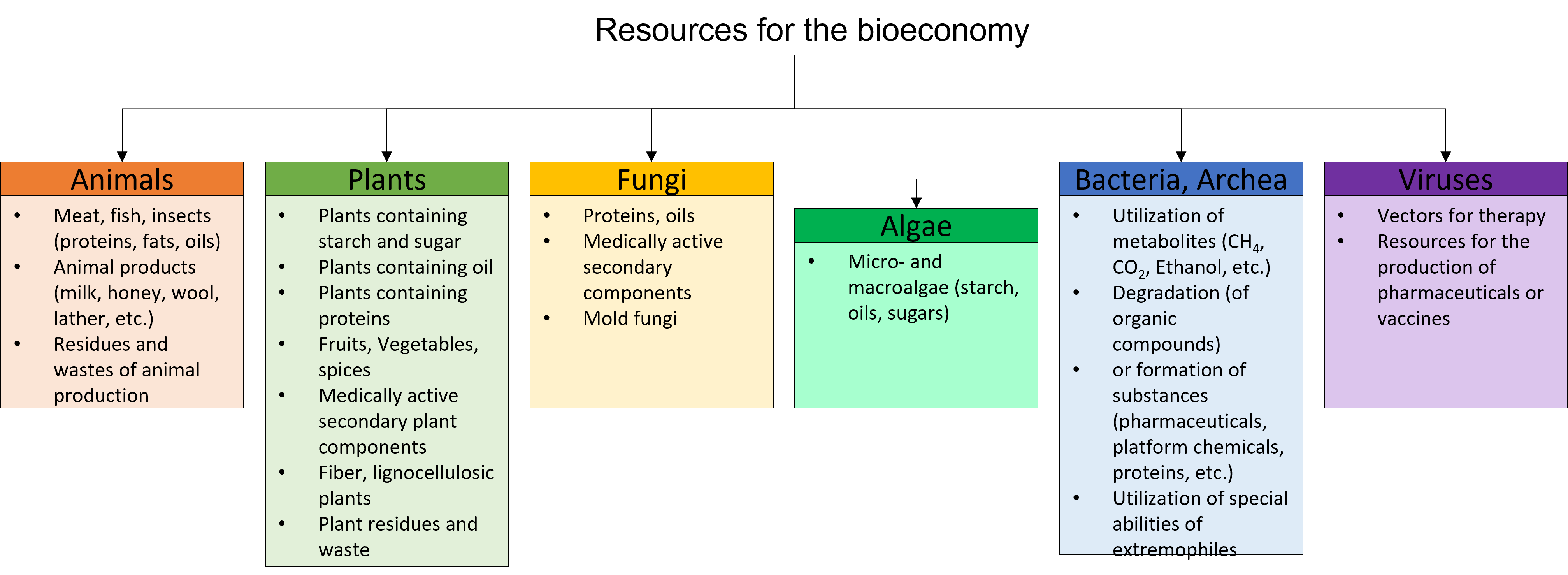2. Resources for the bioeconomy
This book provides an overview of the diverse raw material base of the bioeconomy.
2. Resources for the bioeconomy
The basics
As the name suggests, the bioeconomy is based on organic raw materials derived from animals, plants, fungi, algae or microorganisms. This so-called biomass, as well as its remnants and waste, can be used to generate energy or new products. This chapter provides an overview of the diverse raw material base of the bioeconomy.
- Land
- Water
- Nutrients
Furthermore, bio-based products cannot be produced on a large scale without the use of human labor, technology and infrastructure. Humans have increased the yield of plants through breeding and further increased it through mechanical cultivation. Without these resources, the large number of people on earth could not be fed and supplied with products.
